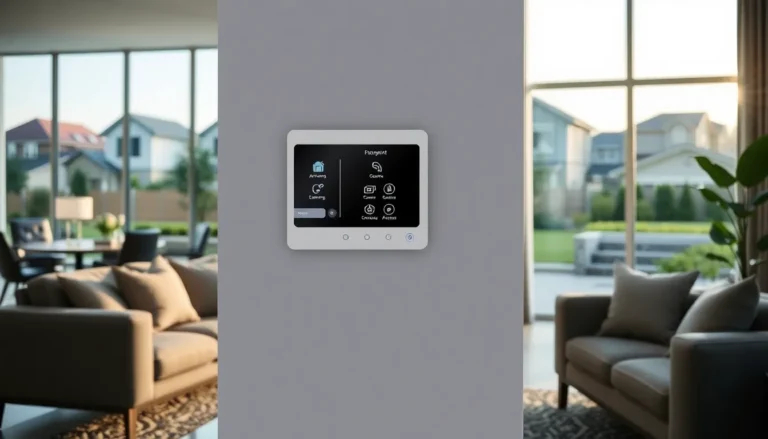Table of Contents
ToggleAre you ready to transform your home into an energy-efficient haven? With chances to save money and enjoy a more sustainable living environment, calculating your energy efficient home improvement credit limit is a savvy move. Not only does it benefit Mother Nature, but it also beefs up your savings come tax time. Just imagine, being able to upgrade your space while reducing your carbon footprint and pulling some cash back from Uncle Sam. Let’s jump into the details so you can harness every dollar possible with this worksheet that’ll make tax season less taxing.
Understanding Energy Efficient Home Improvements

Energy efficient home improvements are not just trendy, they’re essential for modern living. They encompass a broad range of upgrades focused on conservation and efficiency. Think better insulation, energy-efficient heating and cooling systems, and high-performance windows. These upgrades reduce waste, save on energy bills, and eventually contribute to a healthier planet.
When homeowners initiate these changes, they often wonder how much tax credit they can get. Fortunately, governments, both federal and state, have various incentives to encourage energy efficiency. By understanding these improvements, homeowners can make informed decisions and ensure they can claim the credits they deserve.
Types of Eligible Upgrades
When considering energy efficient upgrades, a plethora of options awaits. Here are some prime candidates:
- Insulation Improvements: Enhance your attic, walls, and floors with quality insulation. A well-insulated home maintains its temperature, minimizing energy consumption.
- Energy-Efficient Windows: Selecting double or triple-paned windows can lessen heat gain and loss, this translates to lower heating and cooling costs.
- High-Efficiency HVAC Systems: Upgrading to energy-efficient heating, ventilation, and air conditioning systems means substantial savings on those utility bills.
- Solar Panels: Harnessing the sun’s energy is a rewarding investment. Not only will you cut down on electricity costs, but you may also be eligible for significant credits.
- Energy Star Appliances: From washing machines to refrigerators, Energy Star-rated appliances use less energy without sacrificing performance, proving that efficiency doesn’t mean compromise.
Calculating Your Credit Limit
Once you establish which upgrades you want, it’s time to calculate your credit limit. Here’s how:
Steps to Complete the Worksheet
- Identify Eligible Expenses: Gather all receipts and invoices for the improvements you’ve made.
- Fill in the Worksheet: Use detailed rows for each upgrade, listing the costs next to them.
- Consult IRS Guidelines: There are direct guidelines on how much you can claim, so refer to the IRS website or consult a tax professional.
- Add it Up: Tally your potential credit to see the total you can claim.
Important Documentation to Gather
Having the right paperwork is crucial. Some essential documents include:
- Receipts for your improvements.
- Manufacturer certifications (especially for Energy Star products).
- Installation warranties or other proof of service.
Collecting these materials simplifies the process and ensures you don’t miss out on any credits.
Common Mistakes to Avoid
Even the most well-meaning homeowners can trip up on their energy efficient tax credits. Here are a few common mistakes to steer clear of:
- Neglecting to Keep Receipts: Proper documentation is crucial. Without receipts, claiming credits can become impossible.
- Overlooking State Incentives: Many states have additional incentives not to be missed, know what’s available in your area.
- Assuming All Upgrades Qualify: Not all energy-efficient improvements are eligible for tax credits. Review to avoid surprises.
- Missing Deadlines: Tax deadlines can sneak up quickly, so be aware of timing for submitting your information.
Maximizing Your Tax Benefits
Want to get the most bang for your buck? Here are tips to maximize your tax benefits with energy efficient upgrades:
- Plan Larger Projects: If you’re looking to do extensive renovations, considering planning multiple high-cost improvements at once can qualify you for larger credits.
- Use Professional Services: Don’t shy away from consulting tax professionals. They can guide you through complexities and ensure you maximize your return.
- Stay Updated on Legislation: Tax regulations change frequently. Keep an eye on current laws and upcoming changes affecting your potential credits.





